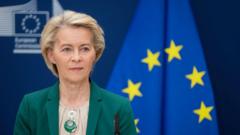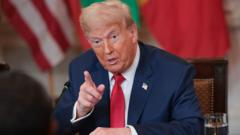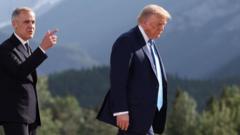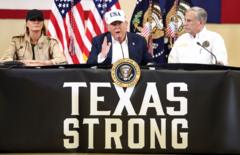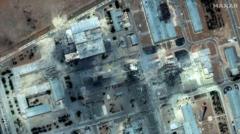With the administration's renewed focus on imposing tariffs on numerous trading partners, Trump is redefining the trade narrative, prompting both front-line negotiations and investor apprehensions regarding the stability of international trade relations.
Trump's Tariff Strategy: A Steady Shift in Global Trade Dynamics

Trump's Tariff Strategy: A Steady Shift in Global Trade Dynamics
President Trump continues to reshape America's trade landscape through persistent tariff policies that challenge the norms of global commerce.
In a bold move reflecting his “tariff man” persona, President Trump is reigniting tensions in global trade by threatening to impose substantial levies on over two dozen trading partners. The president posits that low tariffs have historically disadvantaged the U.S., allowing foreign imports to undermine American manufacturing. By raising tariffs, he aims to bolster domestic factories and decrease reliance on international goods.
Recent developments indicate a significant escalation of these trade threats, with the administration targeting major import sources such as the European Union, Japan, Mexico, Brazil, South Korea, and Thailand, all of which were previously negotiating with the U.S. to preempt tariffs. While some nations, including India and Japan, might secure deals to mitigate these measures, it's clear that American tariffs are on an upward trajectory.
Historical comparisons reveal that these increases are unprecedented since the Great Depression, highlighting Trump’s unique position in American politics and commerce. Even with potential agreements on the horizon, many of Trump’s outlined trade frameworks, such as those concerning Britain and Vietnam, appear to maintain high tariff levels—indicating a lasting shift in U.S. trade policy that could redefine relationships with countries around the world.
As businesses and investors watch closely, the impending changes raise questions about the broader implications for global commerce, signaling a new era dominated by tariffs as a tool of economic strategy.







